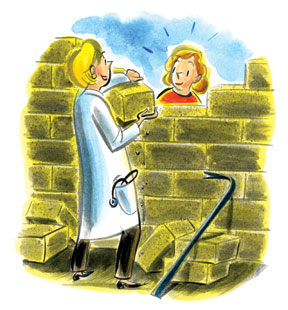



Boundaries: Physicians and Patients

Maintaining healthy boundaries in a patient-physician interaction is essential for physicians. However, every month the College of Physicians and Surgeons of Ontario (CPSO) publishes accounts where individual physicians have violated patient boundaries. Physicians in Ontario have been granted the authority for self-regulation. This privilege is monitored by the CPSO which investigates complaints and issues discipline if needed. Dialogue Magazine is the publication of the CPSO where complaints regarding patient care are documented and described. When reading the various complaints that occur, one realizes that boundary violations and sexual abuse of patients still occur. The sexual abuse of patients by physicians has been a black mark on our profession and needs to be eradicated.

Concerns over professional behaviour are not new:
"...Whatever houses I may visit I will come for the benefit of the sick, remain free of all intentional injustice, of all mischief and in particular of sexual relations with both female and male persons, be they free or slaves." From the Hippocratic Oath.[1]
The College has a clear policy statement (#4-08) for "Maintaining Appropriate Boundaries and Preventing Sexual Abuse". Physicians are NEVER allowed to start a sexual relationship with a patient that they are currently providing care for. Prior to 2008, physicians were prohibited from a sexual relationship with ANY former patient EVER. This guideline has been modified and specific requirements must be met if a physician is considering a sexual relationship with a FORMER patient. For example, if you have provided psychotherapy to a patient, it is unlikely to ever be appropriate to have a romantic relationship with them. However, if you meet a patient once in the emergency room and there is no ongoing care, it may be possible to start a relationship with this former patient. If you are considering a relationship with a former patient, it is best to inform the CPSO and seek their advice on the situation. In particular, it is best to contact the CPSO prior to beginning the relationship.

There will be times when the doctor-patient relationship will be tested. There will be patients that you really like and the boundaries can become blurred. This can happen more easily in a small town setting when you tend to meet your patients outside the health care setting.
Learn to recognize some warning signs or thoughts:
Are you thinking about a particular patient often?
Do you hope a certain patient will return to your office?
Are you sharing your problems with your patients?
These are worrisome signs of possible boundary issues.
The CPSO has a Boundaries Self-Assessment Tool that can be helpful to assess whether you are keeping appropriate boundaries with a particular patient.
_________________________________
1. The Hippocratic Oath webspace.ship.edu/cgboer/oath.html accessed June 23, 2011
 Previous
Previous